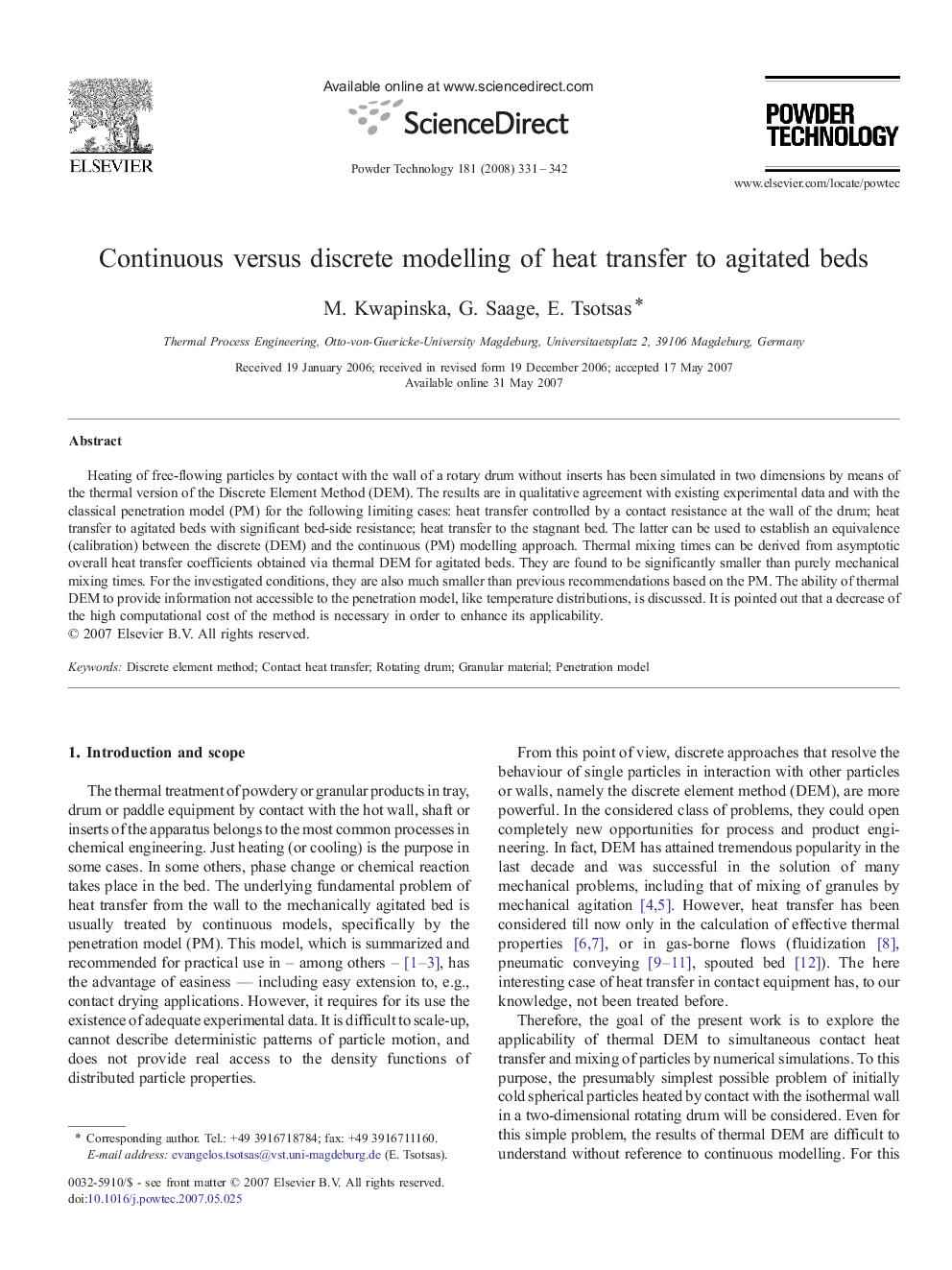| کد مقاله | کد نشریه | سال انتشار | مقاله انگلیسی | نسخه تمام متن |
|---|---|---|---|---|
| 239247 | 465807 | 2008 | 12 صفحه PDF | دانلود رایگان |

Heating of free-flowing particles by contact with the wall of a rotary drum without inserts has been simulated in two dimensions by means of the thermal version of the Discrete Element Method (DEM). The results are in qualitative agreement with existing experimental data and with the classical penetration model (PM) for the following limiting cases: heat transfer controlled by a contact resistance at the wall of the drum; heat transfer to agitated beds with significant bed-side resistance; heat transfer to the stagnant bed. The latter can be used to establish an equivalence (calibration) between the discrete (DEM) and the continuous (PM) modelling approach. Thermal mixing times can be derived from asymptotic overall heat transfer coefficients obtained via thermal DEM for agitated beds. They are found to be significantly smaller than purely mechanical mixing times. For the investigated conditions, they are also much smaller than previous recommendations based on the PM. The ability of thermal DEM to provide information not accessible to the penetration model, like temperature distributions, is discussed. It is pointed out that a decrease of the high computational cost of the method is necessary in order to enhance its applicability.
Application of thermal Discrete Element Method to compute contact heating of particles in a rotary drum is explored. Limiting behaviour (contact control, penetration control) is discussed and a calibration method (stagnant bed) is presented. Thermal mixing times are derived and compared with mechanical mixing times.Figure optionsDownload as PowerPoint slide
Journal: Powder Technology - Volume 181, Issue 3, 12 February 2008, Pages 331–342